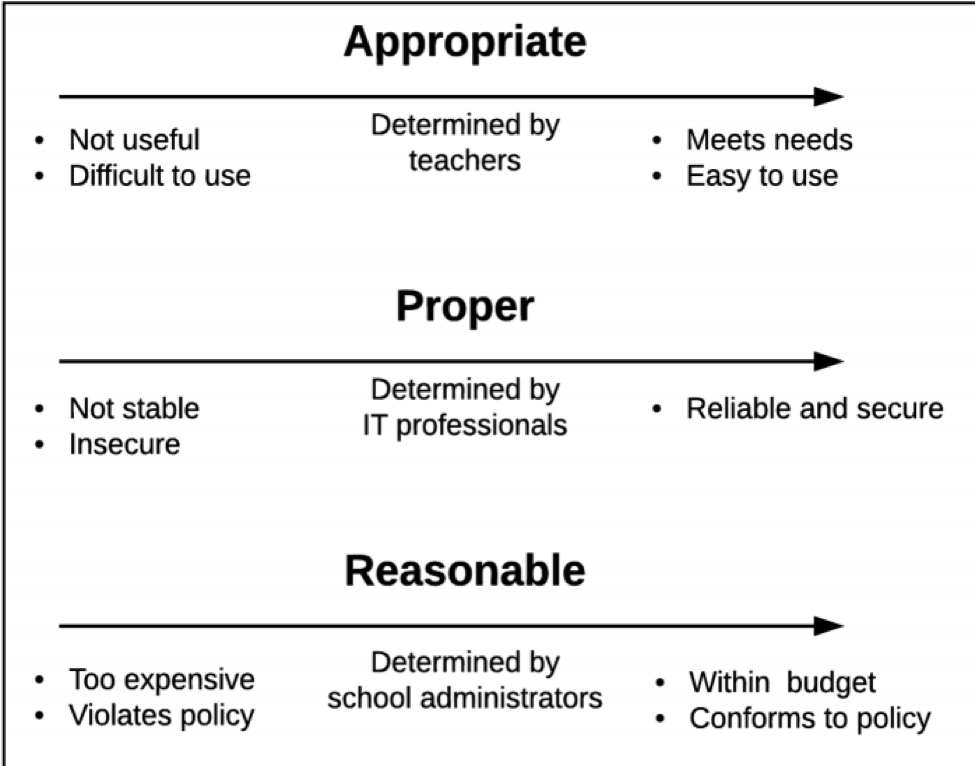When we stop to think about the tools we use in teaching, especially the digital tools that we have today, the question “Do these help us achieve our goal?” arises and appears only incompletely answered. One’s answer to the question depends, of course, on what we believe the goal to be. For me, one who has been strongly influenced by John Dewey in my thinking about teaching and learning, today’s schools must give students experience participating in the world of digital information and interaction.
For schools to provide that experience, they must have information technology systems that are fit the need. While IT systems have been part of the school infrastructure for multiple generations, they continue to be a challenging part of school management. Educators depend on outside expertise to manage the systems, and the management of those systems can sometimes interfere with effective teaching and learning.
I suggest those who are responsible for planning IT systems in schools (which must be a group of professionals as no one person has sufficient expertise in each of the necessary areas) must design systems that are:
- appropriate for teaching and learning
- proper to be reliable, robust and secure
- reasonable to be sustainable and consistent with other initiatives
It system that fail to have these characteristics will be ineffective in schools; if they are identified as not meeting any one of these, then school IT managers must change how they function and are used so they become appropriate, proper, and reasonable.
This brief excerpt from Efficacious Technology Management: A Guide for School Leaders illustrates the point:
I was asked to help resolve some “network problems” in a school. Math teachers had complained that students could not access the online grade book from the computers provided under the recently begun one-to-one initiative. It turned out the network administrator had configured the permissions and switching so that students were unable to access the online grade book while at school. He reasoned, “We need to prevent students from trying to ‘hack’ their grades.” The principal responded, “That seems an insignificant threat, and it prevents students from tracking their grades when they are here at school. It is essential they be able to see their grades while in class with their teachers present” and he directed the network administrator to reconfigure the network. In this case, the network administrator properly configured the network (he had successfully prevented students from accessing the server), but the configuration was inappropriate (it prevented access to information necessary for teaching and learning), and it was deemed unreasonable (thus the school administrator who had authority insisted the configuration be changed).
